Rank Species | Division Pteridophyta Family Azollaceae Scientific name Azolla pinnata | |
 | ||
Class Polypodiopsida / Pteridopsida (disputed) Similar Mosquito ferns, Anabaena azollae, Azolla filiculoides, Water ferns, Azolla japonica | ||
azolla pinnata
Azolla pinnata is a species of fern known by several common names, including mosquitofern, feathered mosquitofern and water velvet. It is native to much of Africa, Asia (Brunei Darussalam, China, India, Japan, Korea, and the Philippines) and parts of Australia. It is an aquatic plant, its frond floating upon the surface of the water. It grows in quiet and slow-moving water bodies, because swift currents and waves break up the plant.
Contents
- azolla pinnata
- Azolla pinnata covering the perth pond sort of fern absorbing nutrients
- Applications in environmental studies
- References

This is a small fern with a triangular frond measuring up to 2.5 centimeters in length which floats on the water. The frond is made up of many rounded or angular overlapping leaves each 1 or 2 millimeters long. They are green, blue-green, or dark red in color and coated in tiny hairs, giving them a velvety appearance. The hairs make the top surface of the leaf water-repellent, keeping the plant afloat even after being pushed under. A water body may be coated in a dense layer of the plants, which form a velvety mat that crowds out other plants. The hairlike roots extend out into the water. The leaves contain the cyanobacterium Anabaena azollae, which is a symbiont that fixes nitrogen from the atmosphere that the fern can use. This gives the fern the ability to grow in habitats that are low in nitrogen.
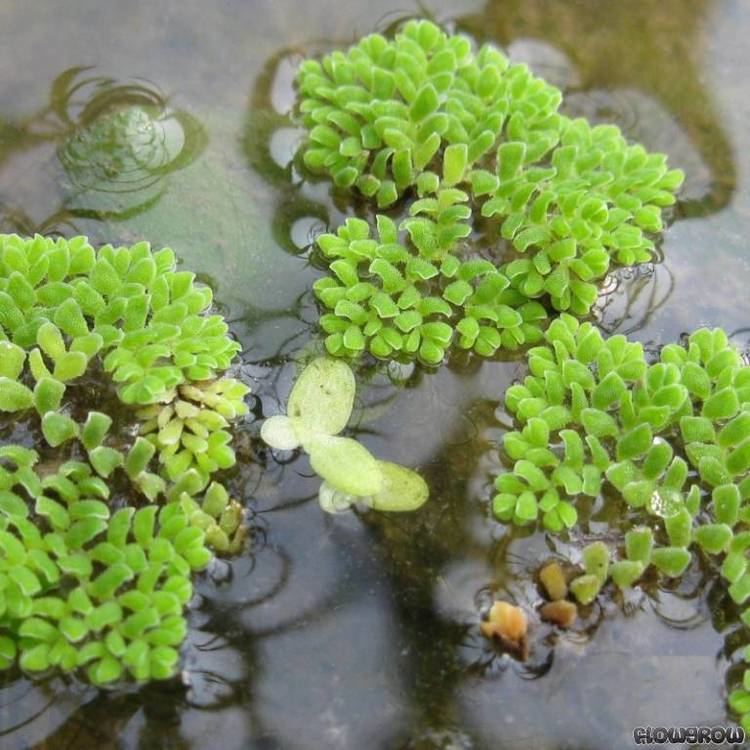
The plant reproduces vegetatively when branches break off the main axis, or sexually when sporocarps on the leaves release spores.
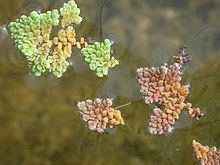
It is present in New Zealand as an introduced species and an invasive weed that has crowded out a native relative, Azolla rubra. It is a pest of waterways because its dense mats reduce oxygen in the water. The weevil Stenopelmus rufinasus is used as an agent of biological pest control to manage Azolla filiculoides, and it has been found to attack A. pinnata as well.
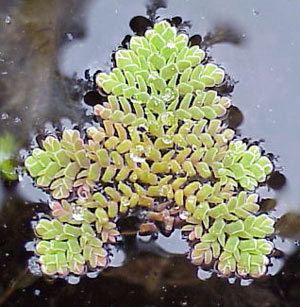
Rice farmers sometimes keep this plant in their paddies because it generates valuable nitrogen via its symbiotic cyanobacteria. The plant can be grown in wet soil and then plowed under, generating a good amount of nitrogen-rich fertilizer. The plant has the ability to absorb a certain amount of heavy metal pollution, such as lead, from contaminated water. It is 25-30% protein and can be added to chicken feed.
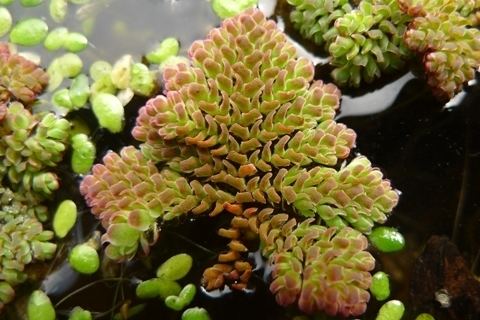
Azolla pinnata covering the perth pond sort of fern absorbing nutrients
Applications in environmental studies
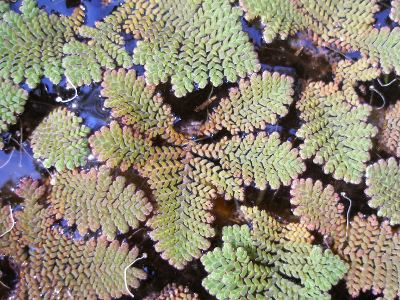
Recent studies show the usefulness of Azolla pinnata in remediation of environmental pollutants. There are two main methods for utilising A. pinnata the clean up environmental pollutants. The first method is by adsorption, which required the A. pinnata to be processed into powder and agitate with the wastewater for fixed duration of time. The pollutant will adhere to the organic functional groups on the surface of the A. pinnata powder. In adsorption studies, A. pinnata were reported in the remediation of dye wastewater containing methyl violet 2B, malachite green, rhodamine B, acid red 88 and acid blue 25.
The second remediation method is phytoremediation, where living A. pinnata suspended on the surface of the wastewater. A. pinnata were primarily studied due to its high tolerance to environmental pollutants. Phytoremediation of industrial wastewater containing heavy metals (such as zinc, lead, mercury , cadmium, copper, arsenic) as well as organic dyes such as methyl violet 2B were reported in literature.
